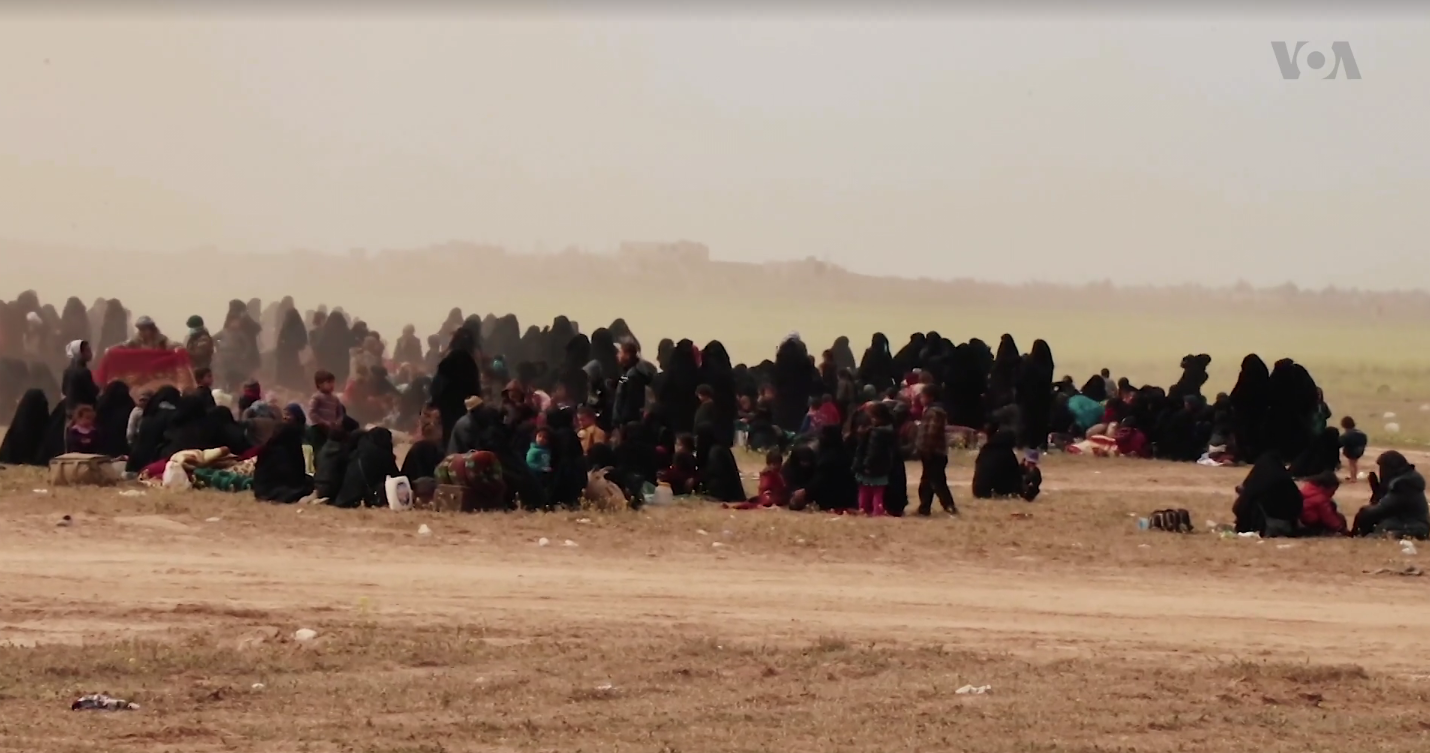Losing Control Over Returnees?
Editor’s Note: Perhaps the biggest counterterrorism challenge facing European states is how to handle their citizens who went to fight in Iraq and Syria and now seek to return. Europe's response has been muddled, with many states reluctant to take responsibility for their nationals yet not advancing an alternative policy. Thomas Renard and Rik Coolsaet of the Egmont Institute assess the problems European states face and outline ways to make the return of foreign fighters less risky and more sustainable.
Daniel Byman
***

Published by The Lawfare Institute
in Cooperation With

Editor’s Note: Perhaps the biggest counterterrorism challenge facing European states is how to handle their citizens who went to fight in Iraq and Syria and now seek to return. Europe's response has been muddled, with many states reluctant to take responsibility for their nationals yet not advancing an alternative policy. Thomas Renard and Rik Coolsaet of the Egmont Institute assess the problems European states face and outline ways to make the return of foreign fighters less risky and more sustainable.
Daniel Byman
***
Donald Trump’s unexpected decision to abandon the United States’s Kurdish partners as the Turkish military initiated a new offensive in northern Syria will have serious ramifications for how the United States and its partners will fight jihadi groups in the region for years to come. For European governments, this development has more immediate implications. It has shattered the last illusions of fragile stability regarding the fate of their national foreign fighters detained in the region.
Returning foreign fighters have been unwelcome in Europe, particularly since the terrorist attacks in Paris and Brussels in 2015 and 2016, which involved returnees. So far, very few fighters have returned over the past three years, especially since the collapse of the caliphate, on account of increased vigilance and security measures across Europe, but the issue of returning fighters remains salient as European countries consider whether and how to repatriate them.
Hundreds of European fighters and their families have been arrested or surrendered in Iraq and Syria during the campaign against the Islamic State. The majority of them now sit in Kurdish-run prisons and detention facilities in northern Syria, while others are in Iraqi jails, where some of them have been convicted and sentenced to death. While the exact numbers of detained Europeans in Iraq and Syria are unclear, some estimates have suggested that approximately 800 Europeans total, and at least 550 adults and children from Belgium and France alone, are known to be held in Syria.
For years, European governments have expressed their reluctance to see these foreign fighters return to their countries, with some officials going as far as to say that they would be “better dead than back.” While most governments have appeared more amenable to the repatriation of children, who are mostly perceived as victims, this has been complicated by public opposition in Europe and the Kurds’ insistence on linking the repatriation of children with that of their mothers—a red line for almost all European countries.
This European reluctance has superseded continuous pressure from the United States to bring their nationals home, even under the threat of a U.S. military withdrawal from the region. Repeated calls from civil society organizations, as well as from legal or security experts arguing that the repatriation of fighters might be the “least bad option,” have not changed the position of European governments.
The main argument against repatriation is that these men and women are unrepentant and represent a serious security threat. In Europe, the argument goes, they will face short prison sentences (if any) and pose a huge security threat in prison and afterward. In contrast, the counterargument in favor of repatriation is that it is safer to prosecute and detain foreign fighters in Europe than to keep them in overpopulated and underresourced Kurdish facilities, which are increasingly at risk of mutiny and large-scale escape, and serve as a hotbed for further radicalization. If these fighters escape, they could participate in the resurgence of the Islamic State in the region, or plot or incite attacks in Europe. Holding fast to its own values and principles of justice, this argument goes, is Europe’s best counternarrative to the Islamic State. To avoid the thorny issue of the repatriation of their nationals, some governments have put forward an alternative proposal to prosecute fighters in the region, whether in Iraq or through a hypothetical international tribunal.
While Europeans procrastinate, the Turkish offensive now creates a serious risk that detained fighters may take advantage of the chaos to escape. There are also questions as to what Turkey would do with the detained fighters if it takes control over certain Kurdish facilities. European governments may soon be forced to make a decision regarding how to repatriate these foreign fighters—or not even have the luxury of a choice if they escape.
The discourse on the subject of foreign fighter repatriation makes two important mistakes. First, it assumes that repatriation is an either-or scenario. However, some governments may consider a mix of scenarios, envisaging the repatriation of some foreign fighters but not others based on individual risk assessments. One could, for instance, imagine the repatriation of some women with their children, while more dangerous individuals would be left behind or handed over to Iraq. The alleged transfer of 11 French fighters from Syria to Iraq early this year (and the recent news of a similar transfer of a Belgian fighter from U.S. to Iraqi control) is a sign that such an approach has been considered and even implemented by some governments. Allegedly, seven EU countries (France, the U.K., Germany, Belgium, the Netherlands, Sweden and Denmark) are in discussions with the Iraqi government to organize the transfer of Europeans from Syria in order to prosecute them in Iraqi courts (in exchange for several million euros per foreign fighter). Many objections can be raised to such renditions on legal, ethical and security grounds. Current protests in Iraq also raise questions about the stability of the country’s institutions and the country’s ability to detain Islamic State prisoners securely. Moreover, clear criteria will be required, as well as solid risk assessments, to determine which fighters can be repatriated safely and which should be transferred to Iraq. In spite of all these caveats, a pragmatic approach might offer European governments a viable way out of the current impasse.
The second fallacy is perhaps even more important. It is the assumption that all returns would either be “controlled” or would not take place. This was based on an illusion of stability. In fact, there are several reasons to believe things have been a bit messier on the ground. First, in spite of all the difficulties, some foreign fighters seemed to be able to simply walk across borders. Interpol recently announced that it had detected more than a dozen suspected foreign fighters in the Mediterranean during an operation (Operation Neptune II) this summer, and two French families managed to cross the border between Syria and Turkey last July. While these stories highlight cases of detected returning foreign fighters, it is realistic to assume that some foreign fighters have remained undetected on their way to Europe.
This is only exacerbated by the growing fear that some of the hundreds of European foreign fighters currently sitting in detention in Syria under the watch of Kurdish forces could escape. Some women already have, according to reports, and things might easily go from bad to worse. Even before the Turkish offensive, incidents had multiplied in various camps. Kurds have acknowledged their inability to maintain order and security in certain parts of their detention facilities (for both men and women), and Islamic State leader Abu Bakr al-Baghdadi has exhorted his followers to free Islamic State fighters from prison. If a number of foreign fighters managed to escape, some of them could travel back to Europe on their own, possibly undetected. Alternatively, they could rejoin the Islamic State’s ranks in the region. In both cases, they would escape prosecution and present a security threat.
Finally, the international dimension of Islamic State families could lead to complex situations. Women in the Islamic State often married several men of different nationalities and sometimes had several children. For instance, Switzerland is now considering repatriating Swiss women and children from Syria. This would allegedly include a Belgian woman who married a Swiss fighter with whom she had two children. Even if Belgium refuses to repatriate its citizens, it could be affected by the decision of other governments. Similar cases could likely arise involving other countries as well.
Europe is not yet done with the challenge of returning foreign fighters, and time is not on its side. More foreign fighters could still return in the future, whether governments want them or not. To begin with, European governments should continue preparing for possible “uncontrolled” returns in the near term. This includes strengthening detection capacities at Europe’s borders and along migrant routes, as well as continued cooperation with non-European countries, notably Turkey.
Furthermore, in light of the limited security at Kurdish detention facilities and potential consequences of the Turkish military operations in the region, European governments should quickly consider a more sustainable policy for their foreign fighters. From a security perspective, the organization of a “controlled” repatriation of European nationals—men, women and children—looks to be the least bad option and could be coupled with prosecution in Iraqi courts at a later date for those who committed atrocities in Iraq. Such a policy would require proactive efforts to repatriate adults and have them detained and prosecuted in their home countries, while placing children under child protection programs. No one is under the illusion that this would be easy, uncontroversial or without risk. However, at this stage, anything but the current impasse would be a policy improvement.
As they consider repatriation, Europeans should have greater confidence in their institutions. Anti-terrorism legislation has been strengthened in recent years, which should significantly ease the prosecution of returnees. Furthermore, most countries have also improved their capacities to monitor and contain radicalization in prison. Repatriating foreign fighters would clearly increase the burden on judiciary and penitentiary services, but these institutions have been preparing for a situation like this for several years now.
Over the longer term, European countries could still improve their capacity to rehabilitate returnees and ensure their safe reinsertion into society after their release from prison. The post-penitentiary transition and the monitoring of returnees in the long term is a challenging task. But it is undoubtedly easier to monitor foreign fighters in Europe than from a distance. Furthermore, having their nationals brought home, European intelligence agencies can anticipate a threat today that might eventually materialize in the future, after the release of these returnees from prison; this puts them in a good position to prepare for this challenge, using all methods at their disposal. Time can be on our side, but only if we make the right choices—swiftly.






